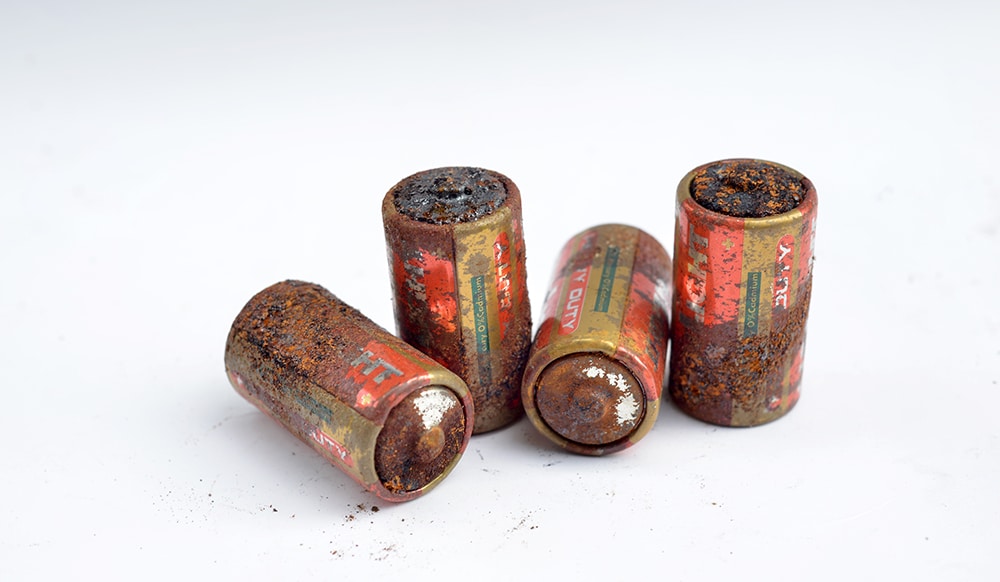Ironing Out the Future of the Battery Market: How Rusty Batteries Could Power Our Lives

In an electrifying twist of fate, the global battery market is buzzing with excitement over a technology designed to make things rust on purpose. We’re talking about iron-air batteries.
Leading this “rusty revolution” is Form Energy, a company that clearly didn’t get the memo about rust being a bad thing. Form’s team recently completed work on an iron-air battery that stores energy through the process of reversible rusting using a water-based electrolyte. This approach is not only innovative but also represents a paradigm shift in how the the public and the battery market views and utilizes materials traditionally considered waste.
In a move as bold as it is brilliant, Form Energy recently announced plans for a whopping $760 million manufacturing facility. Who knew rust could prove so lucrative? This significant investment underscores the growing confidence in the viability of iron-air batteries, which many see as a game-changer in the energy storage industry. It also highlights the potential of these batteries to revolutionize how we store and use energy, particularly in the context of renewable energy integration and grid stability.
AI vastly improves your organization’s chance of making battery metal purchases which generate the most cost downs. Read why.
A “New Kid” on the Battery Block
Why exactly are iron-air batteries causing such a stir? Apart from making scientists and environmentalists giddy with excitement, these batteries use one of the most common elements on Earth – iron. it’s the same element used in everything from skyscrapers to frying pans. Now, it could power our future. Iron’s ubiquity is a key factor in the appeal of iron-air batteries. Indeed, its availability and low cost make it an attractive alternative to more costly materials like lithium and cobalt. Despite their scarcity, both of these elements see widespread use in traditional lithium-ion batteries.

Furthermore, iron has a significantly lower environmental footprint, which is crucial in our ongoing efforts to reduce the impact of technology on the planet. In that way, the shift toward iron-air batteries represents a more sustainable approach to energy storage – one that leverages abundant and eco-friendly materials. This not only benefits the environment but also reduces dependency on rare and often geopolitically sensitive materials, contributing to a battery market that can foster greater energy independence and security.
How Iron Solves Problems
Iron-air batteries aren’t just any old batteries; they’re like the Swiss Army knives of the energy storage world. Designed for stationary grid storage, they’re perfect for when renewable energy sources like solar and wind decide to play hide and seek with the power grid. Indeed, iron-air batteries’ ability to store energy for days or even weeks positions them as a crucial component in balancing the intermittent nature of renewable energy sources. Essentially, they can provide a reliable and efficient way to store excess energy when the sun is shining or the wind is blowing, then release it when demand is high or renewable sources are less available (follow developments in the battery metals market with MetalMiner’s weekly newsletter).

Still, it’s not just Form Energy boarding the iron battery bandwagon. ESS Inc. recently developed a different type of iron battery – one with a flair for the dramatic. With their manufacturing facility up and running in Wilsonville, Oregon, it’s clear that the iron battery brigade is growing stronger by the day. This growing interest from various companies signals a broader industry trend toward exploring and investing in alternative battery technologies. Meanwhile, the diversity in approaches and designs will only further enrich the field, promising innovative solutions and advancements in energy storage.
Iron-Air and the Future of the Battery Market
As the battery market stands on the brink of this rusty renaissance, it’s clear that the road ahead for iron-air batteries is as exciting as it is uncharted. Sure, there are hurdles to jump, such as scaling up production, ensuring the batteries don’t throw a tantrum after a few charge cycles, and figuring out how to make them as efficient as a caffeinated squirrel. Overcoming these challenges will require continued research and development, collaboration across sectors, and, perhaps most importantly, a willingness to embrace unconventional ideas and materials.
The promise of a more sustainable, cost-effective, and downright cool way to store energy has many experts sitting on the edge of their seats. So, as we look to a future powered by what’s essentially controlled corrosion, let’s raise a glass to that ever-humble element, iron. It’s not just for pumping in the gym or fortifying our cereals anymore. Soon, it could power our world in a way that’s as innovative as it is rust-tastically remarkable.
Finally, precision metal-price forecasting meets profitability. Harness the power of MetalMiner Insights cost-saving AI features. Click here.

